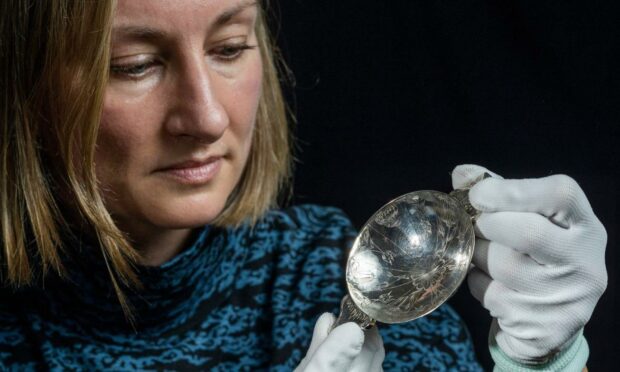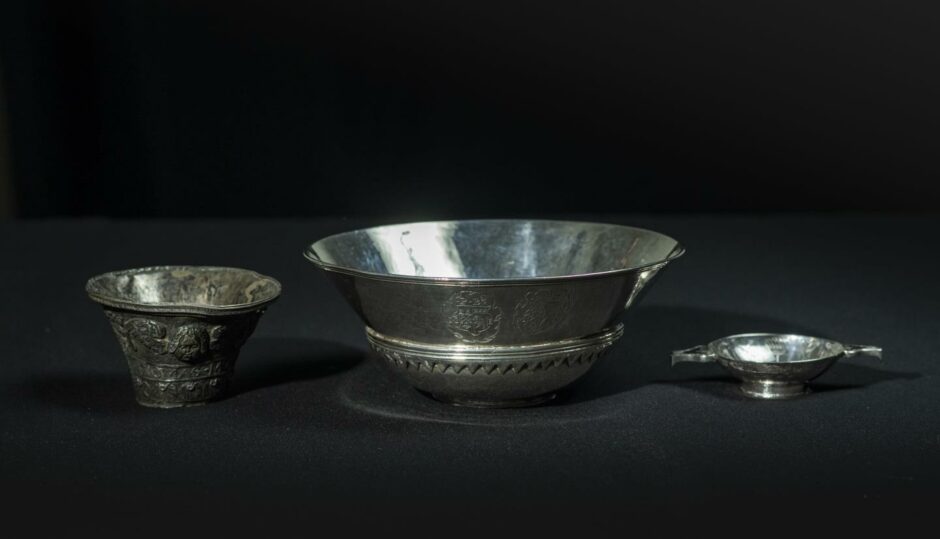A rare 17th-century silver quaich from Aberdeen has been donated to the National Museums Scotland.
The quaich, created in the 1600s, is one of the finest remaining pieces by skilled Aberdeen goldsmith William Scott.
Elaborately engraved with tulips and exotic birds, it is thought the quaich was used to share whisky or sherry.
It has now been gifted to the museum’s extensive collection by Ron and Rosemary Haggarty, alongside two other rare items.
The Bell of Cowcaddens Mazer – once owned by the Provost of Glasgow – is the earliest of the three silver items, and was made in Edinburgh between 1613 and 1615.
Mazers were popularly used for sharing drinks, but only nine Scottish examples are known to survive and just two made entirely from silver.
This particular piece would have been passed on by the provost to person to person, to secure bonds of friendship and political alliances.
The third item gifted by the Haggartys is a silver trumpet bell.
Although it was once mistakenly identified as the neck of a silver vase, it is now known to be the only surviving section of a long ceremonial trumpet.
It is engraved with the arms of the Cassillis family from Ayrshire and would have been used during state and civic rituals. It is one of just three Scottish trumpets from the 1600s still in existence.
Scottish 17th century silver is ‘scarce’
Lyndsay McGill, curator of renaissance and early modern Scottish history at National Museums Scotland said that Scottish marked silver from the 1600s is “scarce” and explained the significance of the gifted items.
She said: “These objects are hugely significant, representing the capability and skill of Scottish silversmiths and revealing more about a fascinating period in Scottish history.
“We are delighted to accept this gift and thank both Rosemary Haggarty and her late husband Ron for their remarkable contribution to the national collections.”

